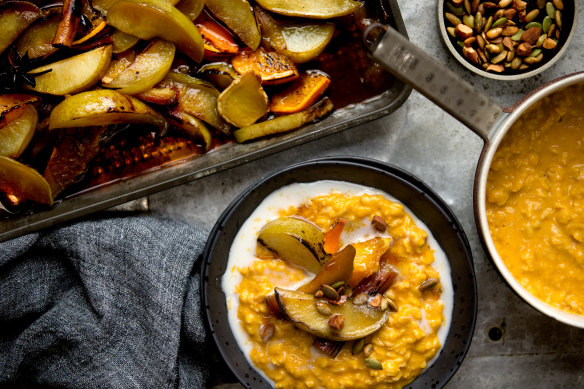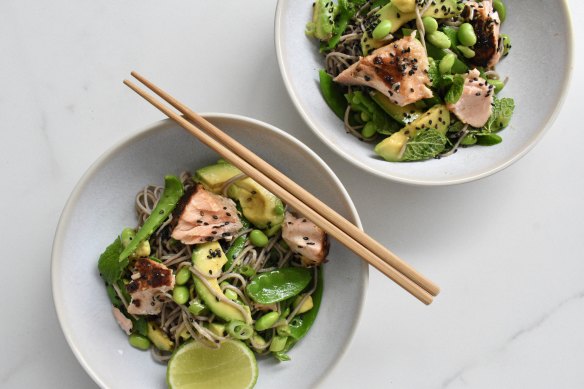Why more young people are being diagnosed with bowel cancer – and how to reduce your risk
One in nine bowel cancer patients in Australia is now aged under 50, with early research suggesting this may be linked to modern diets and lifestyle.
Once considered a disease affecting “old people”, and something to pay attention to only when you reach the age of 50, bowel cancer has emerged as the deadliest cancer for Australians aged 25 to 44.
One in nine bowel cancer diagnoses in Australia is in a patient aged under 50, data from Bowel Cancer Australia shows.
According to the Royal Australian College of General Practitioners, global rates have been rising over the past few decades. Of particular concern is the incidence in earlier years, with a 266 per cent increase in rates among adolescents and young adults over the past 30 years.
Such a dramatic rise suggests lifestyle rather than genetic disposition may be a cause. Slowly, researchers are coming to understand how diet and lifestyle can cause such profound issues in the gut.

What is bowel cancer?
Bowel or colorectal cancer develops when the wall of the large intestine grows abnormal cells. It can be found in the lining or mucosa of the intestine wall, or from growths known as polyps on the bowel wall that turn into cancerous cells, which can then spread to other parts of the body.
Bowel cancer was previously regarded as a relatively slow-growing type. In recent years, however, specialists have observed more younger people presenting with faster-growing cancers.
What can increase the risk of bowel cancer?
As with many different types of cancer, bowel cancer has a strong genetic component. A family history of bowel cancer, especially on both sides, significantly increases the likelihood of developing the disease. But lifestyle is a factor, too: being overweight or obese, having low vitamin D levels, excessive alcohol consumption and having type 2 diabetes all increase the risk.
From a diet perspective, a high intake of red meat and processed meats such as ham and bacon, which contain nitrates, can damage intestinal walls. The World Health Organisation has highlighted these as foods to actively limit in the diet.

The latest on diet and bowel cancer risk
Eating adequate amounts of dietary fibre has a protective effect on the health of the bowel. Getting enough fibre means that waste is more efficiently moved through the digestive tract, leaving less time for mutant cells to grow and infiltrate.
Researchers from Ohio State University have noted that up to 70 per cent of presenting colon cancers in young people occur on the left side of the colon.
“In those over age 50, colon cancer can occur equally on the right or left side,” Ohio State colorectal surgeon Matthew Kalady says. “This could indicate that the cause [of cancers in younger people] is something in the microbiome – the bacterial content of the colon. Species located in different areas of the digestive system vary.”
At the American Society of Clinical Oncology meeting this month, the Ohio researchers noted an association between the low-fibre and high-sugar diets of younger patients with colon cancer.
Emphasising that the research was in its early stages, they said bacteria associated with such a diet pattern had an inflammatory effect in the digestive tract, potentially increasing the risk of cancer cells growing.
Thescientific journal Nutrients published data showing that more than 80 per cent of Australians do not get anywhere near the optimal daily intake of 30 grams of dietary fibre.
Do you get enough fibre?
To get 30 grams of dietary fibre, we need to eat five serves of vegetables and two pieces of fresh fruit a day, as well as wholegrain breads and cereals. Breads and wraps bought as takeaways are generally white or sourdough, so swapping to wholegrain breads and eating more vegetables is some of the simplest ways to reduce the risk of developing colon cancer, regardless of age.
Signs and symptoms
For prevention and early management of bowel cancer, it is essential to pay more attention to what is going into, and on with, your gut. Most importantly, pay attention to changes in your bowel habits.
Any unexplained gut pain, weight loss, constipation or diarrhoea should be thoroughly investigated, at any age. With early detection, bowel cancer has one of the highest rates of full recovery.
The best recipes from Australia's leading chefs straight to your inbox.
Sign up